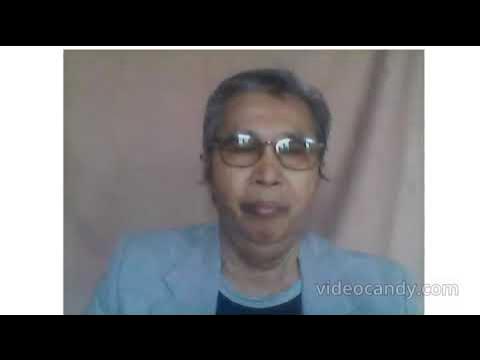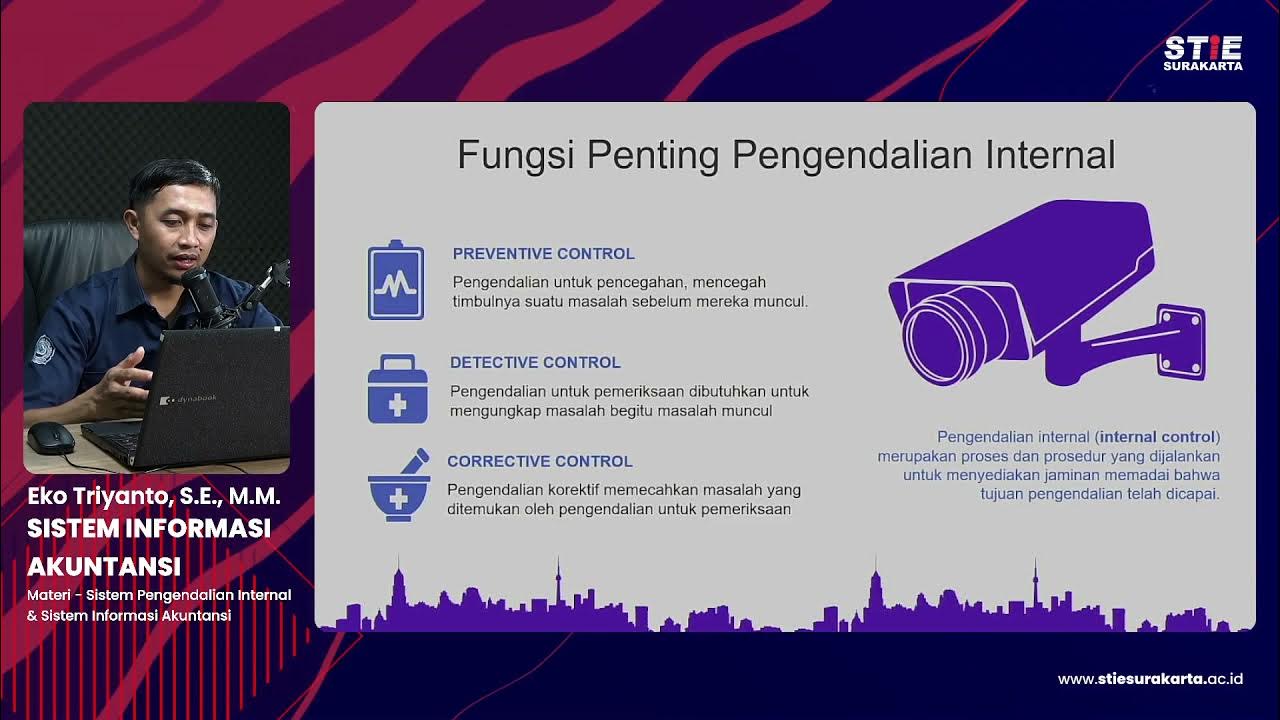Komponen Pengendalian Internal COSO
Summary
TLDRThis video script explains the key components of internal control systems, focusing on the roles of risk assessment, communication, monitoring, and control activities. It emphasizes the importance of integrity, ethical values, and management's responsibility at all levels, from top management to operational staff. The script highlights the structure of internal controls, with principles that guide decision-making, risk management, and compliance. It also discusses the continuous evaluation of internal controls and their adjustment as necessary to maintain effectiveness, ensuring the company's financial reporting and governance remain robust and transparent.
Takeaways
- 😀 Internal control is a comprehensive system designed to manage risks, ensure accurate financial reporting, and comply with regulations.
- 😀 There are five key components of internal control: Control Activities, Risk Assessment, Information and Communication, Monitoring, and an overarching Control Environment.
- 😀 Control Activities encompass policies and procedures that organizations implement to manage risks effectively and achieve their financial goals.
- 😀 Risk Assessment involves identifying and analyzing risks that could affect financial reporting and ensuring proper mitigation strategies are in place.
- 😀 Information and Communication focus on the methods used to share relevant information across all levels of an organization, ensuring transparency and accountability.
- 😀 Monitoring is an ongoing process that evaluates the effectiveness of internal controls and determines if they need adjustments.
- 😀 The Control Environment sets the foundation for all other components, with a strong emphasis on ethics, integrity, and a commitment to competence across all personnel.
- 😀 Internal control principles apply universally throughout an organization, from top management to lower-level personnel, ensuring alignment and understanding at every level.
- 😀 An organization’s commitment to ethical behavior and a robust internal control system are critical for long-term success and risk mitigation.
- 😀 The 17 principles outlined in the internal control framework provide detailed guidelines for implementing and maintaining effective control measures at all levels of an organization.
Q & A
What are the five components of internal control as mentioned in the script?
-The five components of internal control are: Control Environment, Risk Assessment, Control Activities, Information and Communication, and Monitoring.
How does the Control Environment relate to the other components of internal control?
-The Control Environment underpins all other components, providing a foundation for their implementation and ensuring that the internal control system functions properly.
What role does Risk Assessment play in internal control?
-Risk Assessment involves identifying and analyzing risks relevant to financial reporting, ensuring that the company can manage these risks effectively to achieve its objectives.
What are the three main principles related to Control Activities in internal control?
-The three principles related to Control Activities are: developing controls to predict risks, developing general controls over technology, and establishing appropriate policies and procedures.
How does Information and Communication contribute to internal control?
-Information and Communication ensure that relevant and high-quality information is communicated both internally and externally, helping in decision-making and maintaining accountability.
What is the significance of Monitoring in internal control?
-Monitoring ensures that internal controls are functioning as intended and identifies areas where modifications may be necessary. It involves periodic evaluations of internal control systems.
What is the relationship between internal control principles and organizational levels?
-Internal control principles must be understood and applied at all levels of the organization, from top management to operational staff, to ensure comprehensive control throughout the entity.
How does the script describe the role of management in internal control?
-Management plays a crucial role in internal control by establishing policies, procedures, and practices that promote effective risk management and ensuring that these controls are understood and followed at all organizational levels.
What are the key elements of Risk Assessment as discussed in the transcript?
-Key elements of Risk Assessment include identifying risks related to financial reporting, determining how to manage these risks, and assessing the potential impact on achieving organizational goals.
Why is it important for everyone in the organization to understand the internal control system?
-It is essential for everyone, from top management to operational staff, to understand the internal control system because it ensures consistency, helps in managing risks, and maintains accountability across the organization.
Outlines

Esta sección está disponible solo para usuarios con suscripción. Por favor, mejora tu plan para acceder a esta parte.
Mejorar ahoraMindmap

Esta sección está disponible solo para usuarios con suscripción. Por favor, mejora tu plan para acceder a esta parte.
Mejorar ahoraKeywords

Esta sección está disponible solo para usuarios con suscripción. Por favor, mejora tu plan para acceder a esta parte.
Mejorar ahoraHighlights

Esta sección está disponible solo para usuarios con suscripción. Por favor, mejora tu plan para acceder a esta parte.
Mejorar ahoraTranscripts

Esta sección está disponible solo para usuarios con suscripción. Por favor, mejora tu plan para acceder a esta parte.
Mejorar ahora5.0 / 5 (0 votes)






